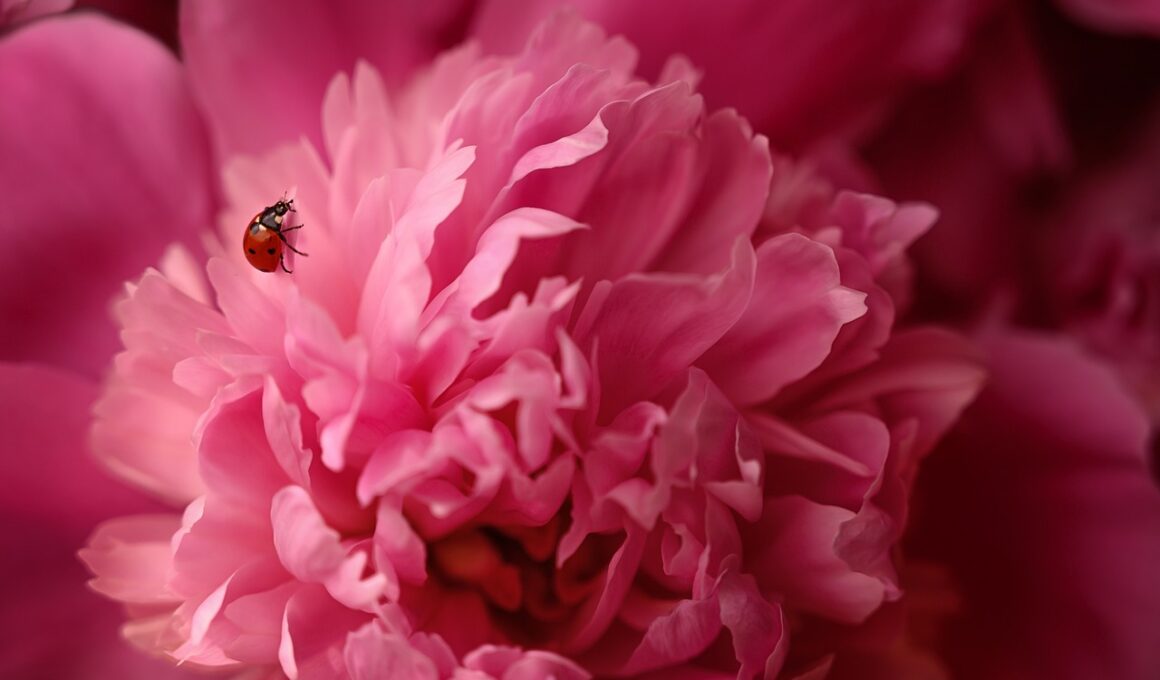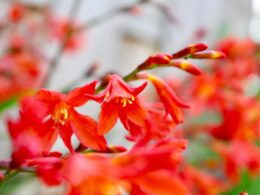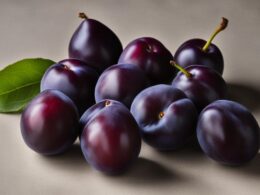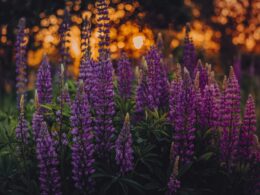Do you want a garden that provides beautiful blooms year after year without the hassle of replanting? Perennial flowers might be the answer you’re looking for.
These hardy plants come back every year, saving you time and money in the long run. Not only that, but they also provide a sense of stability and safety, knowing that you’ll always have a colorful garden to enjoy.
Planting perennial flowers has several benefits. First, they require less maintenance than annuals, which need to be replanted every year. Perennials have a longer lifespan, and with proper care, they can thrive for many years.
Second, they are more cost-effective in the long run, as you don’t have to constantly buy new plants. Finally, they provide a sense of consistency and safety, as you know what to expect from your garden every year.
So, what are the best perennial flowers to plant? Let’s take a look at some popular options.
Benefits of Planting Perennial Flowers
You’ll love the convenience of planting perennial blooms, as they’ll keep coming back to beautify your garden season after season. With a little bit of planning and some thoughtful perennial flower garden design, you can create a beautiful, low-maintenance landscape that will bring you joy for years to come.
One of the biggest benefits of planting perennial flowers is that they’re native to the area, which means they’re better adapted to the local climate and soil conditions. When you choose native perennial plants for your garden, you’re also helping to support the local ecosystem. Native plants provide food and habitat for local wildlife, including birds, butterflies, and bees. They also require less water and fertilizer than non-native plants, which makes them more environmentally friendly and easier to care for. Plus, since they are adapted to the local climate, they’re less likely to suffer from pests or diseases.
Another benefit of perennial flowers is that they can save you time and money in the long run. While annuals need to be replanted every year, perennials will come back year after year, which means you won’t have to spend as much time and money on planting and maintenance. Plus, once established, perennials will often spread on their own, filling in empty spaces in your garden and creating a more natural, organic look.
So if you’re looking for a beautiful, low-maintenance garden that will bring you joy for years to come, consider planting some native perennial flowers today.
Tulips
You’ll love planting tulips in your garden because of their variety of colors and shapes. These flowers are easy to grow, making them a great choice for both experienced and novice gardeners.
Plus, tulips bloom in the spring, providing a burst of color after a long winter.
Variety of Colors and Shapes
With a variety of colors and shapes, you can create a stunning and diverse garden that will always impress.
When it comes to flowers that come back every year, there are plenty of options to choose from. You can mix and match different color combinations and species to create the perfect garden that suits your taste and style.
Some popular species that come in a variety of colors and shapes include daisies, daylilies, and coneflowers.
Daisies come in shades of white, pink, and yellow, and their simple yet elegant shape adds a touch of charm to any garden.
Daylilies, on the other hand, come in a wide range of colors, from bright orange to deep purple, and their trumpet-shaped blooms are a sight to behold.
Coneflowers, also known as echinacea, are another great option, with their large, colorful petals and distinctive center cones.
With so many options to choose from, you can create a garden that’s as unique and beautiful as you’re.
Easy to Grow
It’s so satisfying to watch your garden thrive effortlessly with low-maintenance and easy-to-grow perennials. If you’re looking for flowers that will come back year after year without much effort, here are some great options for you:
-
Coneflowers are hardy and can handle a variety of soil types. They come in a range of colors, from pink to orange to yellow, and bloom from mid-summer to early fall. Plus, they attract butterflies and bees, making them great for pollinator gardens.
-
Black-eyed Susans are another low-maintenance option that can handle a range of soil types. They have cheerful yellow petals with a dark center, and bloom from mid-summer to fall. They also attract butterflies and bees, making them a great addition to any garden.
-
If you’re short on space or want to try container gardening, consider planting some hostas. These shade-loving plants come in a variety of sizes and colors, from small and green to large and variegated. They’re also low-maintenance and can handle a range of soil types, making them a great option for beginners. Just be sure to prepare the soil properly before planting.
Blooms in Spring
Spring is the perfect time to awaken your senses and bring new life to your garden. With a variety of perennials that bloom in this season, you can add vibrant colors and fresh scents to your outdoor space.
Some of the best flowers that come back every year and bloom in the springtime garden include daffodils, tulips, and hyacinths. When planting your spring bulbs, it’s important to choose a spot that receives plenty of sunlight and has well-draining soil.
You should also consider the height and color of the flowers, as well as their bloom time, to create a visually appealing display. With these planting tips in mind, you can enjoy a beautiful and low-maintenance spring garden year after year.
Peonies
When you’re looking for delicate and elegant blooms that will last a long time, peonies are a great choice. They’re low maintenance, so you won’t have to spend a lot of time or effort taking care of them. With a long blooming season that can start in early spring and last all the way through summer, these flowers are a wonderful addition to any garden.
The best part? They’re low maintenance, so you won’t have to spend a lot of time or effort taking care of them.
Delicate and Elegant Blooms
These dainty flowers add a touch of sophistication to any garden and return each season. Their delicate and elegant blooms come in a variety of colors, from soft pinks to vibrant purples. You can’t go wrong with adding these to your garden.
Here are some arranging tips and popular varieties to consider:
- Plant in clusters for maximum impact
- Use as cut flowers in arrangements for a touch of elegance indoors
- Consider varieties such as Lily of the Valley, Bleeding Heart, or Columbine for their delicate blooms
- Pair with larger, bolder flowers to create a beautiful contrast in your garden
Long Blooming Season
You’ll love the burst of color and extended period of blossoming that these stunning plants bring to your garden. Summer perennials are the perfect addition to your landscape, providing long-lasting blooms that will brighten up your yard for months on end. These flowers are known for their resilience, withstanding even the hottest and driest summers with ease.
One of the best options for a long blooming season is the coneflower. These drought tolerant flowers are easy to care for and come in a variety of colors, from classic pink to bright orange and yellow. Another great choice is the black-eyed Susan, which is known for its bright yellow petals and dark center. These summer perennials are perfect for adding a pop of color to any garden and will keep blooming well into the fall. Check out the table below for more options to consider for your garden:
| Flower Name | Blooming Season | Drought Tolerance |
|---|---|---|
| Coneflower | Summer to Fall | High |
| Black-Eyed Susan | Summer to Fall | High |
| Daylily | Summer | Medium |
| Shasta Daisy | Summer to Fall | Medium |
No matter which flowers you choose, these summer perennials are sure to bring beauty and vibrancy to your garden. With their ability to withstand drought and long blooming season, they are the perfect addition for any gardener looking for low-maintenance yet stunning plants.
Low Maintenance
If you’re looking for easy-to-care-for plants that require little maintenance, then the section on Low Maintenance is perfect for you. These are the best flowers that come back every year without needing too much attention from you.
Here are some best practices to help you design a garden that is beautiful and low maintenance:
-
Choose native plants: Native plants are adapted to your climate and soil, so they require less water and fertilizer. They also attract local pollinators, which is great for the environment.
-
Use mulch: Mulch helps retain moisture in the soil, suppress weeds, and regulate soil temperature. It also breaks down over time, adding nutrients to the soil.
-
Group plants with similar needs: Grouping plants that require similar amounts of water, light, and nutrients helps reduce maintenance. It also makes it easier to water and fertilize your plants efficiently.
By following these best practices, you can design a garden that is not only beautiful but also easy to maintain. With a little bit of planning and effort, you can enjoy the best flowers that come back every year without spending too much time in your garden.
Black-Eyed Susans
Looking for a low-maintenance flower that brings bright pops of yellow to your garden? Black-Eyed Susans are a great choice! These perennials are versatile and hardy, making them perfect for both novice and experienced gardeners. Black-Eyed Susans are also commonly used in landscaping, as they add a cheerful touch to any yard.
When it comes to growing Black-Eyed Susans, there are a few tips to keep in mind. These plants prefer full sun, but can also tolerate some shade. They also require well-draining soil, so make sure to plant them in an area with good drainage. Once established, Black-Eyed Susans don’t need to be watered frequently and can even withstand drought conditions.
To show just how stunning Black-Eyed Susans can look in your garden, take a look at this table:
| Emotion | Color | Symbolism |
|---|---|---|
| Joyful | Yellow | Happiness and optimism |
| Cheerful | Black | Protection and stability |
| Longevity | Brown | Endurance and strength |
| Grateful | Green | Renewal and growth |
| Excited | Orange | Enthusiasm and energy |
As you can see, Black-Eyed Susans evoke emotions such as joy, cheerfulness, longevity, gratitude, and excitement. With their bright yellow petals and dark centers, they are sure to add a burst of color to your garden year after year. So why not give Black-Eyed Susans a try in your landscaping and enjoy their low-maintenance beauty for seasons to come?
Daylilies
You’re going to love how daylilies bring a burst of color to your garden with their vibrant petals and how their hardy nature makes them a perfect addition to any landscape.
There are different varieties of daylilies, with colors ranging from bright yellows to deep purples, and they all bloom from late spring to early fall.
These plants are low maintenance and can thrive in almost any type of soil, making them a great choice for both novice and experienced gardeners.
To care for daylilies, it’s important to plant them in a spot that gets at least six hours of sunlight per day.
They prefer well-draining soil, so be sure to amend the soil with compost or other organic matter before planting.
Water the plants regularly, especially during hot and dry spells.
Deadheading spent blooms will encourage more flowers to grow, and dividing the clumps every few years will help keep the plants healthy and promote better blooming.
Incorporating daylilies into your garden is a great way to add a pop of color and texture to your landscape.
With their hardy nature and different varieties to choose from, they’re an easy and rewarding addition to any garden.
Plus, their low maintenance needs make them a great choice for those who want to enjoy beautiful blooms without too much effort.
So why not add some daylilies to your garden today?
Frequently Asked Questions
Can perennial flowers be grown in containers?
If you’re looking to grow perennial flowers in containers, there are a few container gardening tips you should keep in mind.
First, make sure you choose a container that’s large enough to accommodate the plant’s root system.
You’ll also want to select the best types of soil for perennial flowers in containers. Look for a well-draining soil mix that’s rich in nutrients.
When planting, be sure to add a layer of gravel or rocks at the bottom of the container to help with drainage.
With proper care, perennial flowers can thrive in containers and provide a beautiful addition to your outdoor space year after year.
How often should perennial flowers be fertilized?
To keep your perennial flowers healthy and blooming year after year, it’s important to fertilize them regularly. You have two options when it comes to fertilizers: organic or synthetic. While synthetic fertilizers may provide a quick boost of nutrients, organic fertilizers offer long-term benefits to the soil and the environment.
Best practices for pruning your perennials include removing any dead or damaged stems, shaping the plant to promote healthy growth, and cutting back spent flowers to encourage more blooms. By following these simple steps, you can ensure your perennial flowers thrive and bring beauty to your garden for years to come.
What is the best time of year to plant perennial flowers?
Are you thinking of planting perennial flowers? The best time to plant them is during the spring or fall when the soil is cool. Before planting, it’s important to choose the best location for your flowers. Perennials thrive in areas that receive at least 6 hours of sunlight per day, and they also need soil that’s well-draining and rich in organic matter.
Once you’ve planted your flowers, it’s crucial to maintain them throughout different seasons. During the summer, make sure to water them regularly and provide shade if the temperature gets too hot. In the fall, cut back any dead foliage and add mulch for insulation during the winter. Come spring, remove the mulch and fertilize your flowers to give them a boost.
By following these tips and choosing the right location and soil type, your perennial flowers will come back year after year, providing a beautiful and low-maintenance addition to your garden.
Are there any perennial flowers that are deer-resistant?
Looking for perennial flowers that can withstand deer? Look no further than these top picks for deer-resistant perennials.
Some of the best options include daffodils, lavender, and yarrow.
Planting these perennials in areas with other deer-resistant plants can also help deter deer from munching on your garden.
When planting, make sure to choose a spot with plenty of sunlight and well-draining soil.
With these planting tips and companion plant suggestions, you can ensure that your garden is both beautiful and safe from deer damage.
How do you divide and propagate perennial flowers?
If you’re looking to expand your perennial flower garden, there are a variety of plant propagation methods you can use to divide and propagate your existing plants. Benefits of perennial flowers in landscaping include their ability to come back year after year, saving you time and money on replanting.
To divide and propagate your perennials, start by digging up the entire plant and separating it into smaller sections. Make sure each section has roots and a few stems, then replant in a new location.
Another method is to take stem cuttings and root them in soil or water. Whichever method you choose, be sure to water regularly and provide proper care to ensure your new plants thrive.
Conclusion
Great job! You’ve learned about the best flowers that come back every year, and the benefits of planting perennials.
Now, let’s recap the top four flowers that you should consider adding to your garden.
First, we have the stunning tulips, which come in a variety of colors and can bloom in early spring.
Next, peonies are a classic choice with their large, fragrant flowers that bloom in late spring to early summer.
Black-eyed susans are a hardy flower that can thrive in almost any condition, and they add a pop of yellow to your garden in the summer.
Finally, daylilies are another easy-to-grow option with a variety of colors and can bloom from early summer to fall.
By planting these perennial flowers, you’ll be able to enjoy their beauty year after year without having to replant them. So, get ready to sit back, relax, and enjoy the gorgeous blooms that these flowers will bring to your garden!









